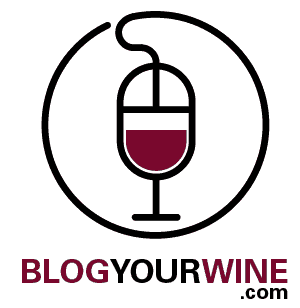This is a post that I have been wanting to write for quite some time, but am only just now getting round to it. First of all I wanted to use real examples to illustrate each point, and I knew that would take a certain amount of labor in order to collect each screenshot.
I am using wineries as an example of the top 10 mistakes made on Facebook, but it can indeed be applied to any business. My intention was to write this as one complete post, however as I started putting together notes, I quickly realized it was going to be bigger than I originally planned! The second half will therefore be continued tomorrow.
10. Setting up Shop as a Profile or Group
When joining Facebook for the first time, you are presented with options to either setup your account as a profile, group or page.
Profiles are reserved for ACTUAL people, Groups are reserved for… well.. groups (becoming less relevant as Facebook evolves), and Pages are reserved for businesses. The number of businesses setup on Facebook as a profile instead of a page is more prevalent than might you think!
The main concern with being setup as a profile when you are in fact a business, is that if the powers that be at Facebook find out, your account will be shut-down without any type of warning or notification. Don’t think it won’t happen to you because it happens all the time, and it could take weeks to get it back up and running. You also can’t run crying to the customer service department at Facebook because there isn’t one!
If you are already setup as a profile instead of a business, there is no easy way to convert your profile to a page without potentially losing fans. This makes conversion hard for a business to swallow. The only way it can be achieved is through constant messaging, letting your users know that the profile will be taken down and replaced by a page. I do however highly recommend it to be a worthwhile use of your time!
There are a number of advantages to being setup as a page instead of a profile, too many to list in this post, but here are just a few:
-Facebook ads are not available to profiles (should you want to use them)
-If you want users to “check in” at your business, this is impossible with a profile.
-Customizable applications (such as email signup and ecommerce) are not available to profiles.
In the below example, you can see just a very short selection of wineries setup as profiles instead of pages.
 9. Outsourcing
9. Outsourcing
Most wineries cannot afford the amount of time it takes to properly maintain a Facebook account, they will therefore outsource it to either a marketing company or intern.
People (for the most part) aren’t stupid! They will slowly start to realize that you are only posting generic updates because you probably have a teenage intern or PR firm handling your marketing efforts.
My advice to wineries is to at least hire a part-time Social Media consultant / advocate for your business. They can handle the basic administration of the account, blocking spam and responding to users etc. However, you as the owner of the business NEED to be posting on your Facebook Page at least a couple of times each week (with personal messages and photos), in order to maintain a sense personal feel to your brand.
8. Not Engaging with Fans
The below screen shot is one that I took last year (2010) to drop into a presentation I was doing on Social Media. The winery in question is probably one of the top 10 wineries (both in price and name recognition) in California.
What it shows is a number of users who obviously love the brand, and have posted various comments or questions on their Facebook Page. The winery however wasn’t paying attention, and the comments were never answered. In one case a guy was even looking to do a wine dinner featuring the winery, but was never contacted (at least to my knowledge).
The whole concept of Facebook is to interact and engage with others, anything short of that is money down the drain! In this example, a customer is basically offering a business money, and the winery couldn’t even take 2 minutes out of their day to respond!
I’m happy to say that a few months ago, the winery in question hired a very capable Social Media guy to take on their marketing. They are now one of the leaders in the industry.
7. Sporadic Posting
If you are a business and looking to do Facebook the “right way”, first consider that you NEED to be posting at a very minimum every other day. If you don’t plan on posting AT LEAST once every two days, don’t even bother setting your business Page up!
Now a lot of people read this and will think ,“Well that doesn’t apply to me because I really don’t want to spam my Page fans.” I can see how this could be a concern if we were talking about emails, however on Facebook your post will only show up on a Page fan’s news feed for a few hours, then it will be gone (except for on your wall). Status updates and posts are very rarely a nuisance to Page fans.
On the other hand, if you are posting every few days with updates that basically just scream “BUY MY PRODUCT!!!!” users will switch off and no longer interact with your brand. With a steady flow of Facebook updates, you aren’t forcing users to click into your message, as with email or direct messaging. Your brand is however staying in the mind of those who see the post, even if they don’t click on it. Unobtrusive marketing at its best!
This leads nicely into my next point…
 6. Over Direct Messaging
6. Over Direct Messaging
Too many direct messages on Facebook is the same as spam email. There are very few reasons you should ever want to frequently direct message your entire fan base.
On a side-note, this is why I say that Facebook will never be able to rival any of the email providers. People generally want to keep work and pleasure separate (with the exception of Bill Clinton). They don’t want to spend all day checking emails, then go onto Facebook (a service designed as a social tool), and end up having to read a bunch more direct messages!
In fact while I was writing this post, I have received a bunch of direct messages, and marked all as spam.





Sam Folsom
Great observations, Kris, particularly the caution against constant ‘Buy My Product’ posts.
Kris Chislett
Thanks Sam.